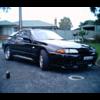Leakdown Test With Motor Out.
Announcements
-
Similar Content
-
Latest Posts
-
The GTT probably only has the same little bag of tools that the R32 had, which contained useless pliers, a spanner or two, a screwdriver thingo, and the handle and crank stuff for the jack.
-
Could someone post some pictures of the factory Jack , tools, spare tire and how they were in a 1998 ER34 2 door skyline originally?
-
UPDATE: Hi all! As we are getting towards the end of this thread where I’ll showcase final dyno numbers and graph, I wanted to provide an update. Tao from HyperGear has done an amazing job building the custom divided T3 housing for the G30. Communication was flawless, price was great, and now the housing is estimated to arrive in 7-10 days! Very very pleased. I must add, if someone is looking for an affordable turbo and end up reading this thread, I would recommend HyperGear. Genuine brands are the way to go as their proven reliability, predictable performance, and there’s a plethora of information available for specs, flow, and more. This HyperGear recommendation is based on their excellent communication, dedication, and willingness to listen to their customers. I particularly liked their ability to create custom adaptations tailored to specific needs, which is a HUGE benefit over other brands. And if we consider the HyperGear provided dyno results, it adds reassurance knowing their turbos can compete against genuine brands. Next update will be after the dyno!
-






Recommended Posts
Create an account or sign in to comment
You need to be a member in order to leave a comment
Create an account
Sign up for a new account in our community. It's easy!
Register a new accountSign in
Already have an account? Sign in here.
Sign In Now